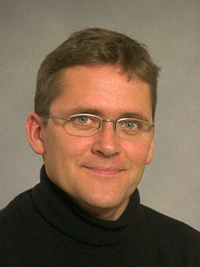A Beleaguered Denmark Turns to ...New York City?
It's not every day that New York City is sought out as a model for how to manage human relations-'"particularly by Europeans, who sometimes imagine the Big Apple as a Darwinist battle-ground.
It's not every day that New York City is sought out as a model for how to manage human relations-'"particularly by Europeans, who sometimes imagine the Big Apple as a Darwinist battle-ground.
Yet New York is not known as one of the world's premiere melting pots for nothing. It has survived, more or less intact, the 9/11 terrorist attacks, the Amadou Diallo and Abner Louima police cases, and even the rescinding of public art funds by a Catholic mayor over a purportedly sacrilegious museum exhibit.
Hence, the unique roundtable discussion that was held at TC in February titled, "What can the European Union learn from New York's politics of civic integration and religious dialogue in the public square?" The event was organized at the behest of Anders Samuelson, Representative of the Danish Social Liberal Party to the European Parliament, and other Danes in the wake of the controversy that has engulfed Denmark following the publication there of cartoons featuring the prophet Muhammad. A panel of New York City civic, religious and cultural leaders weighed in on approaches Denmark could take to create a more cohesive and inclusive population with sensitivity to the beliefs and customs of all its ethnic populations.
"New York City is the adult child of Europe overcoming its parents' racism," said Imam Al-Hajj Talib Abdur-Rashid of The Mosque of Islamic Brotherhood in Harlem. "It seeks to build communication through social services, public advocates and religious leaders."
In any country, new immigrants must choose between integration (combining new and old identities), assimilation (losing their old identities) or isolation (keeping old identities and isolating themselves from public participation), said Wissam Nasr, New York's Executive Director of the Council on American-Islamic Relations, America's largest Islamic civil liberties group. The majority of immigrant public speakers are isolationists, Nasr said, and that fact, coupled with the generally conservative press in the home countries of most Muslims, has resulted in "a silencing of Muslim moderates" worldwide.
Lambros Comitas, Gardner Cowles Professor of Anthropology and Education at TC, explained how the new European Union, with more open borders, parallels post-1965 New York City, "where you had a settled immigrant community meeting with new immigrants who still had very close ties to their language, heritage and native lands." Telephones, faxes, inexpensive flights and the Internet have complicated these confluent situations, Comitas said, by creating a new "trans-national activism," in which, for example, the cartoons published in Denmark rapidly crossed communities and countries, eliciting outrage in the immigrants' home countries and driving an even greater wedge between the immigrants and their new communities.
Fear of deportation may be another reason why new immigrants fail to integrate with their host countries. "Fear is a barrier," says Azadeh Khalili, Deputy Commissioner of New York City's Office of Immigration Affairs. The New York City Mayor's Office works to connect immigrants to city agencies through a "Don't Ask, Don't Tell" privacy policy, Khalili said, enabling non-documented citizens to receive services without fear of deportation. In addition to instituting this privacy policy, the City has mandated its agencies to produce documents in multiple languages so immigrants "can unite as a community and advocate for themselves."
Debbie Almontaser, from New York City's Department of Education, who has been sharing strategies internationally since 9/11, suggests Denmark create curriculum that teaches conflict resolution and cultural sensitivity training, like that developed with TC's International Center for Cooperation and Conflict Resolution in both after-school programs and faith-based organizations.
While the panel did not specifically discuss the cartoons or the feelings they have engendered, both Imam Talib and Adem Carrol, of the Islamic Circle of North America, said Denmark must work to understand the internalized oppressions and mistrust within its immigrant Muslim community. Nasr added that the world often resembles a cliquish high school lunch room. If one group has always bullied another, he said, and if one day the bully suddenly offers peace, the other group will understandably react with distrust. Now that the Danes recognize the deep-seated resentment of Muslims in their midst and are trying to make changes, they must be prepared for Muslims to ask, "Who is trying to assimilate us? Who is trying to divide us? For what purpose?"
In conclusion, the TC panel advised the Danish delegation that the only way to successfully integrate Muslims into Danish society is to allow immigrants and non-immigrants to participate equitably and have a voice in the public square. The voice must not be dictated by the government, but come from within the immigrant community. The government must gain knowledge about which segments of the Muslim community are included in the public square and which aren't; which part are keeping their language and which aren't; how their native Arab states are influecing these Muslims; what specialized assistance is needed to help these Muslims integrate themselves into society; and what cultural sensitivity and training must be given to native and immigrant communities to form common fronts.
It's a long list, especially in reaction to what may once have seemed like a simple cartoon. But the alternative, as Denmark and the rest of the world have recently learned, is no joke.
Published Monday, Apr. 24, 2006
